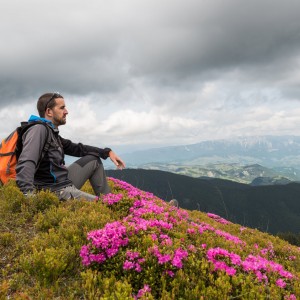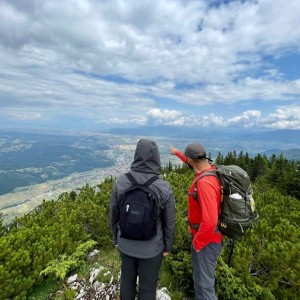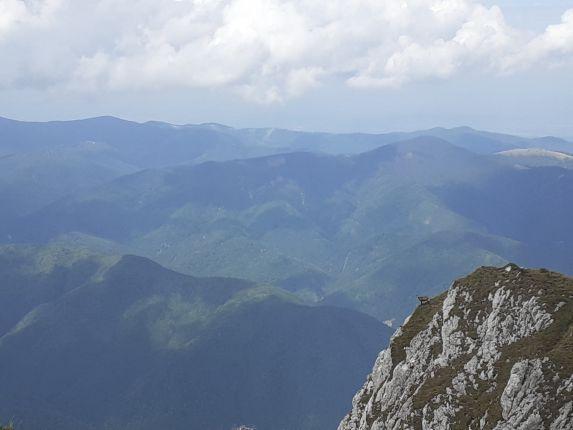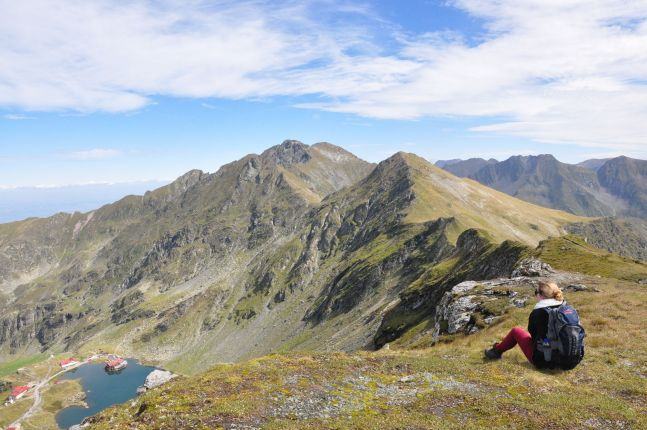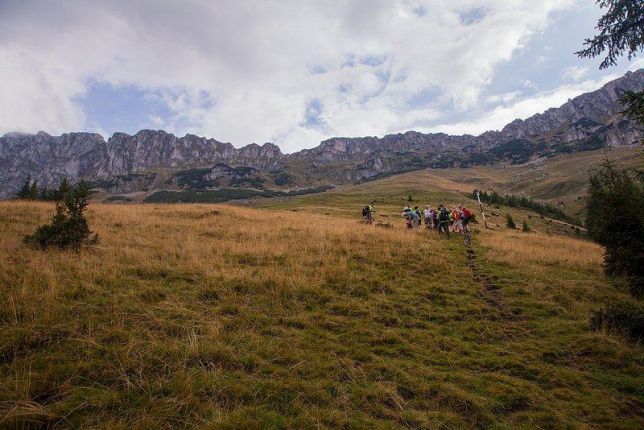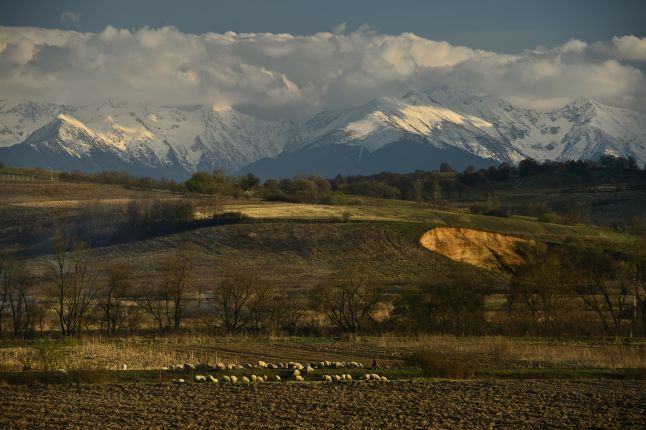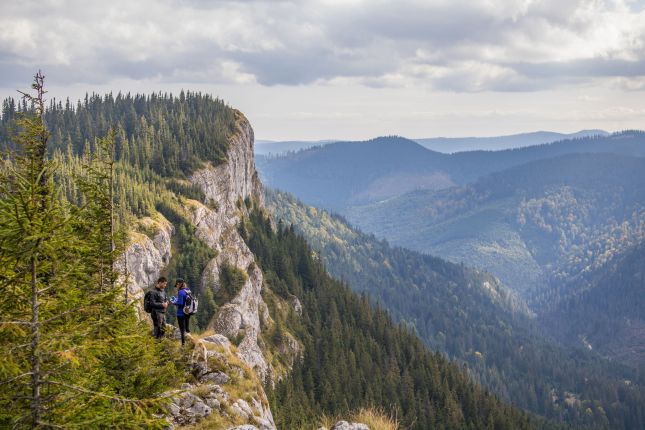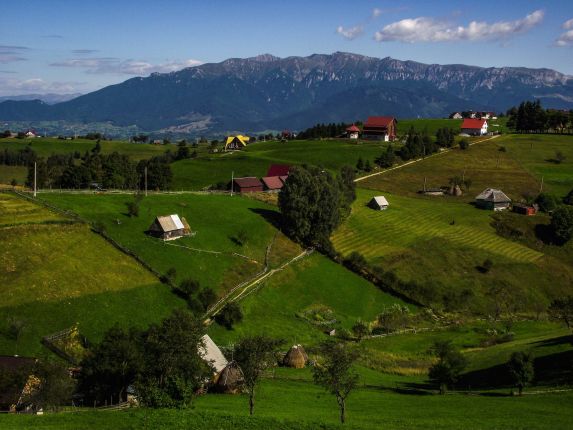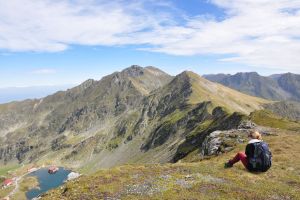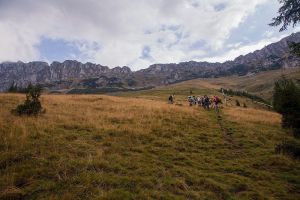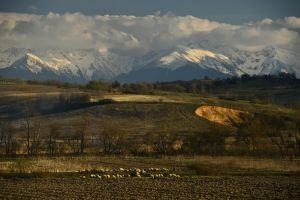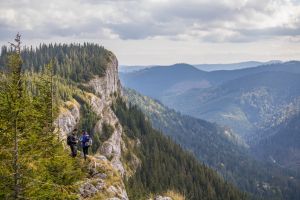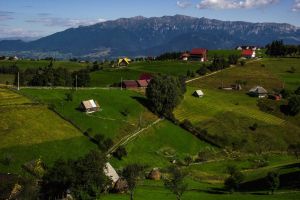
Hiking & Trekking Trips
Romania is a fantastic yet undiscovered and wild destination for hiking and trekking tours! With the Carpathian Mountains dividing the country and occupying almost 55% of the land area, there is so much to explore, natural wonders to admire and peaks to summit! The most popular mountain ranges for hiking trips are Fagaras, Bucegi, Piatra Craiului and Apuseni accessible on 1-day trips from major tourist cities. Check our hiking in Romania guide we prepared with lots of info and suggestions on where to go and how to prepare for your trip.
As Romania's hiking infrastructure is underdeveloped, there are few tourists, lots of bears roaming in the mountains and few people who speak English in the countryside - we highly recommend you go on guided hiking tours with licensed mountain guides who have on-the-ground knowledge of mountain trails and can keep you safe. They will take you on hiking day trips or trekking trips suitable to your physical condition and interests. Check our tours below:
Tour type:
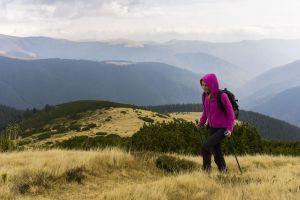
Hike to Glacial Lakes in the Wild Iezer Papusa Mts
Start from: Bucharest
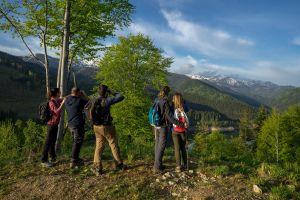
3-day Hiking & Wildlife Trip in the Wild Carpathians
Start from: Rucar village, Arges county
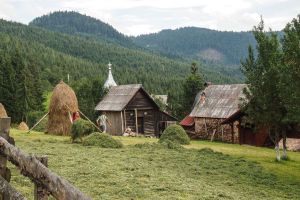
2 Day Hiking in Apuseni Natural Park: Culture & Local Life
Start from: Cluj-Napoca or Sibiu
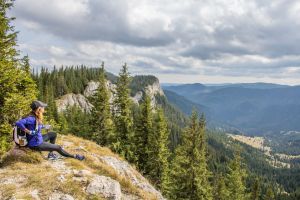
1 or 2-day Hiking Tour from Cluj: Wild Trails in Apuseni Natural Park
Start from: Cluj-Napoca
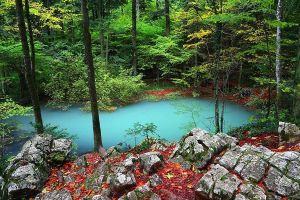
Magical Hike in Nera-Beusnita National Park to Ochiul Beiului Lake
Start from: Timisoara
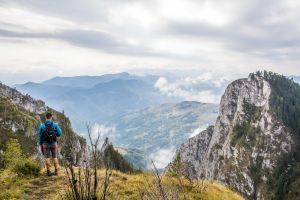
Hike to a Unique Natural Reserve in Apuseni Mountains
Start from: Cluj-Napoca
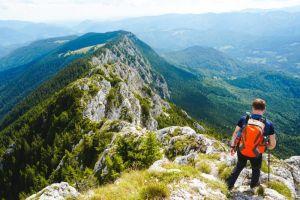
1, 2 or 3 Days Hiking Tour in Piatra Craiului National Park
Start from: Brasov
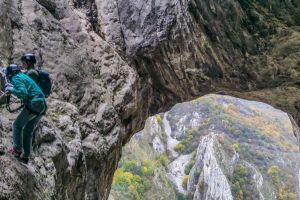
Hiking or Via Ferrata Lesson in Turda Gorges
Start from: Cluj-Napoca
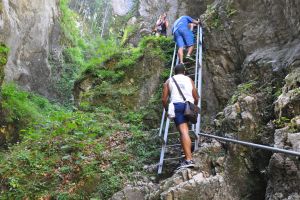
Hiking Trip to the Spectacular 7 Stairs Canyon
Start from: Brasov

{{ activity.title }}
Start from: {{ activity.starting_point }}
Reviews about Hiking & Trekking Trips

We had a fabulous trip in the mountains which were especially beautiful after a fresh fall of snow. It was a good length of day out and a good intro to the range. Bogdan, our guide is highly experienced and knowledgeable and we were fortunate to benefit from that.

We had an amazing two day hike with Mihai. He was knowledgeable and accommodating, letting us squeeze in other activities if we wanted. A beautiful way to explore stunning landscape. The chalet we stayed in overnight was also beautiful and cosy.

I had a perfect 2 days hiking trip in the Bucegi mountains with some great views and nice landscapes from rocky cliffs, to a nice plateau, an interesting gorge and beautiful autumn forests. The tour guide Radu was very nice and had a lot to tell about the region and the history of rumania. I booked the tour last minute and was happy it worked out. I really loved this hiking trip and would highly recommend it.

This tour was an incredible experience. Iancu was a very friendly and knowledgable tour guide, and took us to some great spots with amazing views that we would definitely not have found on our own. He even provided a picnic with desert, drinks, and cheese after at the top of a mountain with more incredible views following the traditional Romanian restaurant lunch, which was an awesome bonus. Will be highly recommending this tour to anyone visiting and even family I have nearby that has likely never been to the specific spots Iancu knew about. Thanks Romanian Friend!
Hiking and trekking trips in Romania
Come for the views, stay for the hiking trips – in short that’s what hiking in Romania will feel like Romania is a great destination for hiking and trekking trips! Why?
Because the Carpathian Mountains occupy 28% of the country and with foothills added that’s almost 55% of the country’s land area. Also, there is this unspoiled pocket of nature in the heart of the country, carefully protected from civilization by the majestic Carpathian mountains. This is where some of the most impressive trails are, so going on a hiking tour in Romania will be a treat!
As far as effort is concerned, the highest peak is Moldoveanu at 2.544 m and there are 14 others above 2.500m to conquer. That’s why mountaineering is one of the most popular hobbies for Romanians. Most big cities and mountain-side cities and towns have shops that sell special mountain equipment, from the right clothing to hiking equipment. This can mean two things:
- if you come unprepared for a trip in the mountains, you can still buy what you need locally
- the mountains in Romania must be taken seriously. So much unspoiled nature is incredible to witness, but also demanding when it comes to conquering it, so having the right equipment is important
- hiking infrastructure is underdeveloped so it’s important to be prepared
Hikers and outdoor enthusiasts will have many hiking trails and trekking trips to choose from, with rewards in the form of spectacular views. The Carpathian Mountains in Romania are divided into 3 major sections:
- Southern Carpathians (from the Danube River to Brasov area)
- Eastern Carpathians (from Brasov to the Northern border with Ukraine)
- Western Carpathians (in the Western part of Romania)
The best hiking trips will be in the mountains of Fagaras, Bucegi, Piatra Craiului and Retezat (Southern Carpathians), Apuseni and Trascau (Western Carpathians), Calimani and Rodnei (Eastern Carpathians).
But while there are so many hiking opportunities to suit every fitness and enthusiasm level, tourists must note that it is highly recommended to go hiking in Romania with a licensed hiking guide. Here’s why.
While some of these trails are quite accessible and easy to do even by people with a lower fitness level or people traveling with children - there are even trails recommended for people who wish to get their children used to doing mountain trails. However, although in larger cities and in touristy mountain towns there will be people who speak English and who will be able to give directions, the further you move up the mountain and into the foresty heart of the country, the fewer chances you have of getting help in case you get lost. Sure, the trails are marked and there generally is reception.
But the signage is sometimes old, in Romanian but hard to decipher as it the writing is faded. No luck using Google translate there if you cannot make out what the sign says. Therefore, hiking in Romania without a licensed mountain guide can be risky because there are few (if any!) maps, boards or information points about trails, markings and mountain refuges, not to mention indications in English. The few locals that live along hiking routes know little English and won’t be of much help, although they might try to help however they think best. Plus, there are some areas with weak cellural reception and looking up maps on the Internet will be difficult. Not to mention calling someone.
If you do wish to try out some of the more accessible trails, please keep in mind some of the following aspects. The emergency number in Romania is 112. The Mountain Rescue unit is called SALVAMONT. They have an amazing website full of useful information, but in Romanian. Also, they have a dedicated phone number, but 112 gets better reception even in remote areas, and the operator will know best which the closest unit is to send in case you need help.
Keep cash on you, and not big bills. Make sure to change them at the hotel or at shops nearby. And get all the necessary things for your trip when you have the chance. The less touristy a village is, the fewer options you will have for purchasing anything, from bottled water to food and pharmacy items. Some villages may not even have a pharmacy, for example. Not to mention an ATM. If you wish to try it by yourself, best stick to the trails starting from touristy locations because this way you know you will be well equipped for the trip.
Having a phone with a number enlisted in the national network would also come in handy because, based on location, you can get the RO-Alert messages, letting you know about severe weather warnings or bear sightings. It is important to keep your location options turned on, especially when you are going on a trail.
So, there’s no other way to put it, while you could pull of some of the more popular trails, packed with tourists who might speak English and would be able to lend you a helping hand, hiking in Romania is best done with someone who has local knowledge, guidance and preparation. Do not underestimate the Carpathians – their wilderness and rugged character can quickly become a danger to your safety and there are frequent reports of people stranded in the mountains on their own, waiting to be rescued. That's why Romanian Friend works only with licensed mountain guides and our tours are carefully created by them.
Here are the most popular mountain ranges for hiking trips in Romania, easily accessible from Romania’s major cities:
1. Fagaras Mountains
Also called Transylvania’s Alps, Fagaras Mountains are located in the heart of Romania and undoubtedly offer our country’s most dramatic landscapes. This is probably the most attractive touristic destination for locals and foreign travelers alike. Every weekend, you will see lines of cars going up the Transfagarasan Road. If you are planning to bike on what Top Gear called the `best road in the world`, do not do it on a weekend. Or even on days which could be extended into a weekend, like a Friday or a Monday. It will be packed.
But mountaineers will also be pleased: here are Romania’s highest peaks and most challenging ridges, meaning hikes are more difficult but also more rewarding! Moldoveanu Peak which at 2,544 is the highest in Romania and Negoiu, the 3rd highest, await – but a trekking trail to conquer them needs to be well prepared. Luckily, we know the right mountain guides for that!
There are as many as 80 trails in the Fagaras mountains, and most of the information on them is in Romanian. So, getting a certified guide who can properly assess your physical condition, check for weather conditions, bear sightings in various areas, pick refuges, and plan a trip that is both safe and exciting.
The Fagaras mountain range is divided in sectors, and you can pick the trails closest to you, or you can travel a bit for a more accessible or a more challenging trail from a different county.
The Fagaras mountain range is also rich with glacier lakes, Balea Lake being the most famous one. The lake sits at the top of Transfagarasan Road and is accessible by cable car all year round (depending on weather conditions). During winter, besides off-piste skiing in the Transfagarasan valley, you can enjoy a warm drink at the Balea Ice Hotel!
Other glacier lakes are Avrig, Podragel, Lacul Doamnei, Caltun. There are also waterfalls like Balea, Valea Moasei, Negoiu, Serbota. All trails lead to these natural monuments or connect several of them in one very exciting trip. This is one of the most important reasons why you might need a certified guide. Because it is not only about conquering the highest peak. There are several of them, all at a height of over 2000 meters. But it is about knowing how long it takes to reach a summit AND make it back to civilization in daylight.
The trip to Varful Negoiu (2535 m), for example, with an end point at the Cabin with the same name, is as difficult as it is rewarding, and it takes an experienced hiker 7-8 hours. If you travel in a group, the chances of all people having the same fitness level and being able to keep up, are low. There is always one person dragging behind, so that 7-8 hours is a mere notion. It is clear that you will need to spend the night in the mountains, and you need the help of a guide to set this up. If you make this trip at the end of June, you might just see the mountain peony, a very rare and special flower.
There are various combinations of trails in the Fagaras mountains. Some are shorter – 2 -3 hours and extremely taxing, some are long and difficult, others are simply long but accessible. The Turnu Rosu – Suru peak trail, for example, is a medium level trail, but takes 10 hours to complete. It will take you to glacial cirques, a most unique sight.
An example of a more accessible, yet just as stunning trail is the one that takes you from Balea Lake to Balea Waterfall. It takes around 3.5 hours, it is of average difficulty, and it is accessible throughout the year, including in winter, depending on how much snowfall there is.
Do you think you can handpick from 80 trail options and get prepared the right way for whatever challenges they might entail? Better pick once, one amazing guide, and just focus on your physical effort and enjoy the sights.
As far as lodgings go, unless you have somewhere to stay in some of the more popular resorts, there are few options along the way. Even so, on weekends, most of these locations will be packed full because Romanians love to travel on weekends. Booking in advance is always wise.
If you need to stop for the night during your hike, the tent is your only option. If you plan on reaching a peak and wish to sleep at the cabin, you must call ahead and make sure they have room and that they are expecting you. Otherwise, simply camping in the woods is NOT RECOMMENDED. We know you might feel tempted because as you push forward, you feel more at one with nature, but there are wild animals and it is overall dangerous. There are camping areas, but you must only stop there and not simply along the way where no one can find you. A guide will know best and plan a trip so that there are no unforeseen situations.
2. Apuseni Mountains and National Park
Apart from the reasons stated above, one of the main reasons why you might need a hiking guide in the Apuseni mountains is that there are natural reservations and that is it best to go with someone who knows his way around the place and not have you stumble across a family of animals or wondering in an area with protected fauna and restricted access.
The Apuseni Mountain range is the main massif in Romania’s Western Carpathians. While it doesn’t stand out with remarkable heights (the highest is Bihor Peak is at 1,849 m), the natural wonders found within, and charming traditional villages spread around the hills (the ethnographic region known as Motilor Land) will exceed your expectation. If a strenuous hike is not your cup of tea, get your guide to plan a nice walk around some of the picturesque villages in the area. Take in the joys of unsploied country life and wonder on forest trails, if you do not feel the need to step into the great unknown of the Western Carpathians. There is plenty to see and do around the Motilor Villages as well.
That’s why the entire area is part of Apuseni Natural Park and is one of the most popular hiking destinations in Transylvania. These lands with picturesque hills and dense woodlands offer more than meets the eyes: over 200 fascinating caves are open for visitors, deep caving and speological exploration; some remote areas perfect for dark sky observation; karst formations with narrow canyons ideal for mountaineering, rappelling, via ferrata, white water rafting and many others!
Like all trails in the Carpathian mountains, you have options ranging from several hours to full on 9 – 10 hours of ascent alone. Some of them are circuits, meaning that they will take you up one way and down another, completing one hike in the mentioned amount of time. Like the Custurilor Circuit, which takes 3 – 3.5 hours to complete, or the circuit which takes you to visit the Bohodei waterfall. This is a trip which offers you the opportunity to take in some amazing sights, but it is incredibly challenging. It includes a chain portion, and the terrain is very steep. Only people in great physical condition can do it and not in all weather. If it rains, you need to cancel your plans as there is a big chance you might slip and fall on the smooth rocky surfaces.
The direction of the hike, starting from Pietroasa village to Aleului Valley, then meadow, to the waterfall, then the Bohodei ridge, Serpilor Valley and back to Aleului Valley must be done just as suck. It is forbidden to take the trip the other way around as the descent is dangerous. The trial is not open in winter. These are all important things a guide must keep in mind when taking you on an Apuseni hike.
The most popular sights in Apuseni Natural Park are: Scarisoara Glacier and Ice Cave, Rusty Ravine, Scarita Belioara Reserve, Bears' Cave and Bride's Veil Waterfall. Nearby is also Turda Gorge, an enclosed miracle oasis of nature also popular for hiking and via ferrata adventures. Apuseni Mountains and Natural Park are easily accessible from Cluj-Napoca, but also from Oradea and Timisoara.
For safety reasons, it is best to keep to the homologated trails and hace your guide register with the Mountain Rescue (Salvamont) every time you go on a difficult course. Also, if you are attempting to do this by yourself, please note that not all trails are homologated and not all information is available. There are still plenty of trails, practiced especially by people living in the area or by seasoned mountaineers who prefer solitude, and that are not homologated.
These hiking trips might take you through areas that are not always safe, and accessibility has not been established for all seasons. The Apuseni mountains are still very wild, and people prefer to keep them like this as they are the home of many species of animals. It is best to keep to the trails already studied as there is a lot to choose from.
3. Retezat Mountains and Natural Park
The hidden jewel of the Carpathians, the Retezat Mountain range in South-Western Romania (near Timisoara) was a couple of votes away from being included in a list of The New 7 Wonders of Nature. Part of the Southern Carpathians, Retezat Massif is located in Hunedoara County between the cities of Petrosani and Hateg. Its highest peak is Peleaga at 2.509 meters high and on their way to the summit hikers can choose from numerous routes of varying difficulty and admire the many glacial lakes. These parts of Romania are mostly untouched, and the sights offer a breathtaking natural beauty.
Since the Retezat Mountains are a national reservation hosting an important number of wild animals, it is best to choose trails carefully. Preferably, with the help of a professional guide. Retezat Mountains are also among the most difficult mountains for hiking and an above average physical condition is needed. Multi-day trekking tours require advance and serious planning.
For starters, if you are visiting in winter, there are only two out of tens of options which are practicable in such conditions. Otherwise, there is a number of trails with durations ranging from 2 to 10 hours you can choose from. But don’t let yourself be fooled by time alone. Some trails are strenuous, take a long time, but they are not that long. There are very few boarding options on most of these trails, so camping is the main option. If you are not a fan of sleeping in a tent, best choose another mountain range.
There are a lot of lakes with breathtaking scenery: Lake Zanoaga, Lake Stanisoara, Lake Judele, Caprei Lake. Lake Bucura – Campul lui Neag is a 7-8 hours long trail, accessible all through the year. But do not be fooled by the plateau areas surrounding these lakes as the hike up there is difficult in most cases. Gura Apei to Lake Bucura takes 10 – 11 hours to complete and it cannot be done in harsh weather.
We know licensed mountain guides from Timisoara and Bucharest that can take you on a tour, just let us know. The city of Timisoara is the closest starting point but you can also consider hiking in Domoglead - Cernei Valley Natural Park or Nera – Beusnita National Park, which have natural wonders of their own.
4. Bucegi Mountains
The Sphinx and Babele rock formations found in Bucegi Mountains (entry from Busteni) are well-known symbols of Romania’s Carpathian Mountain. Thousands of tourists beat the trails of this mountain range each year to admire these two fascinating rock sculptures crafted by nature and the views of the surrounding area. Caraiman Cross, a monument dedicated to World War I fallen soldiers towers over a cliff nearby and is also a major attraction as is Omu Peak, the second highest in Romania at 2,505 m.
At the base of this mountain range there are many resorts (Sinaia, Busteni, Azuga and Predeal) which can be used by mountain-lovers as a base to explore the area, whether during summer for winter sports. And with famous attractions such as Peles or Cantacuziono Castle nearby, this has to be on your list! Hiking in Bucegi Mountain is easy to do on day trips from Bucharest or Brasov.
5. Piatra Craiului Mountains and Natural Park
Probably the most picturesque mountain range in Romania, Piatra Craiului Mountains can be seen in the distance from Brasov. This is also the best option for people with a low to average fitness level to do some hiking.
The trails are highly accessible, ranging from real trails that require mountaineering skills to simple walks through the countryside. Their white continuous ridge scratches the ski in the distance forming a small arc. The villages of Magura, Moeciu or Sirnea at the base of the mountains are the highest villages in Romania at 800m and are representative for traditional Romanian village life, with sheep or cow herds crossing the paths of hikers.
The big Piatra Craiului circuit takes around 12 – 14 hours to complete. It is a difficult trail which starts and ends in Zarnesti, a mountain village and resort with a lot of boarding options and restaurants to replenish your depleted energy levels after such a strenuous hike. Between the Sipirea Refuge at 1420 meters height and the Grind refuge upon the descent at 1620 meters, there is the Omu peak at 2238 meters height. If you practice this trail in winter time, this portion is closed off as it is a chain portion and is very difficult.
The smaller circuit takes only 5-6 hours, starts from Zarnesti, takes you to Curmatura Cabin through mountain meadows of such a beauty that will make your heart weap. At the Cabin, you can enjoy a hearty mountain meal, depending on what they have prepared. Be it a warm soup of a delicious savory treat. Everything tastes amazing after an effort. Then back. An option would be to get back to Zarneti through the Gradistei Gorge. Another amazing scenery.
Inside Piatra Craiului Mountains you shouldn’t miss Zarnesti Gorges – a narrow canyon that will isolate you from the outside world. And while you’re hiking in the mountains, be sure to look for Bran Castle perched on a ridge nearby!
Other mountains for incredible trekking trips in Romania
Ceahlau Mountains situated in the Eastern part of the Carpathians, is probably the wildest and most challenging of them all. Durau, in the county of Neamt is the closest mountain resort where you can find boarding and food and water for your hike. Unlike the resorts in the more touristy areas such as Brasov or Busteni and Sinaia, it is best to come equipped for these hikes as these mountain villages are more remote. A guide is also necessary as fewer people in the Eastern part of the country speak English. Other tourists might help, but you cannot rely on this happening.
Although some of the trails are marked medium, it is mainly because many of them are used by people on pilgrimages and you would be amazed at what mountain trails devout women will climb to spend the night at a monastery near Dochia cabin at 1706 meters altitude. If old women in sandals and long skirts surpass you in your professional mountain equipment, do not feel bad and do not think that the trail should be more accessible. These women have better training than you do. So, swallow your pride, be humble and get a guide that will show you the wilderness of the Ceahlau mountains. If anytime during the climb you will feel like this is it, it’s normal. These are really tough trails.
Rodnei Mountains is another mountain range in the Eastern Carpathians. Its highest peak is Pietrosu with 2303 meters and the Rodnei Mountains National Park is the second largest in the country. It is home to 15 glacial lakes, 1200 rare plants, 22 species of lizzards, 150 species of birds, and 40 species of mammals. There are about 6 protected natural areas. It is best to travel accompanies by special guide who can also give you information about what you are seeing. If you take the trip in May, you could see the mountain peony and the Rodnei Mountain rush-candle. An experienced guide can also make sure you travel respecting the recommendations of the authorities.
Ciucas Mountains are less touristy and promoted than their Bucegi counterparts. However, they are just as inviting and offer hiking opportunities for mountaineering enthusiasts as well as for beginners or people travelling with children. The landscape is very beautiful, and the trails are less populated. This means that having a guide with you is a good idea given the fact that there is a smaller chance of meeting other tourists who might know English to help out.
The tallest peak to conquer is the Ciucas peak at 1954 meters. A climb up to this peak from Bratocea pass takes about 4 hours. Another 4 hours trail taking also to the Ciucas peak starts from Vama Buzaului. Halfway through the trail, the path become steeper and steeper, and you need to watch out for the markings as the path becomes less obvious. There are trails for every taste, but it is best to be accompanied by a guide.
 2 REVIEWS
2 REVIEWS
